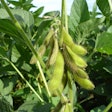
By Tom Sleight, USGC president and CEO
Every other week, much of the U.S. Grains Council's global staff gathers on a conference call. The 7 a.m. meeting in Washington - that means 6 a.m. in Mexico City, 1 p.m. in Tunis and 8 p.m. in Beijing - is hardly convenient for the 30 or so biweekly participants. Yet it's one of my favorite parts of the week because it's an opportunity to hear directly from the people on the ground in our global markets.
The top issues I've heard on these calls in recent months mirror the updates that cross my inbox and WhatsApp feed all day long: in market after market, major policy actions have the potential to reshape the global export map for our grains and grains products in this marketing year and far into the future.
A recitation of the top buyers of U.S. feed grains and ethanol could almost double as a list of markets grabbing trade policy headlines on a near-hourly basis - Mexico, Canada, China, Japan, the European Union, Peru.
On Nov. 30, President Donald Trump and his counterparts from Mexico and Canada signed the U.S.-Mexico-Canada Agreement (USMCA), a milestone in the development of the new pact to replace the North American Free Trade Agreement (NAFTA). To USGC and our many friends and longtime customers in Mexico, this marked an important and welcome return to “business as usual.”
Still, steel and aluminum tariffs are an outstanding concern with those countries and others, and the Mexican government has said it would consider implementing a carousel of tariffs in response. The existing tariffs on items such as pork and dairy give us great concern; to once again rotate the pain to other products, perhaps including grain, heightens this concern. Withdrawal from NAFTA during the process of Congressional ratification, which would cause intense uncertainty in the market, is also still on the table in the near future, the President has said.
Meanwhile it appears China is returning to the market for U.S. ag products with soybean purchases this week. How much, how long and how many other commodities will trade are the questions on everyone’s minds now. The Council is continuing its active engagement both in the United Sates and in China, following up on the momentum begun during the dinner between President Trump and President Xi Jinping in Argentina. Sorghum, corn, distiller's dried grains with solubles (DDGS) and even ethanol will hopefully trade in the days and weeks ahead. Future purchases by China would, of course, be a major, positive influence on U.S. ag sales and global ag markets.
Meanwhile, our staff members in Washington and overseas are working to help our government prepare for new trade talks with Japan, the European Union and the United Kingdom. This involves diligently gathering information from Council members and overseas stakeholders that we then translate into testimony and comments submitted to negotiators leading the charge for new agreements.
We are also dealing with challenges in places where we already have established trade policy on the books, for instance with pending countervailing duties investigations against U.S. corn and ethanol exports to Peru. Stopping the contagion of protectionism and its impacts on U.S. coarse grains and co-products has become our job #1.
These actions in the here-and-now don't even consider the future potential for new negotiations with countries in South and Southeast Asia, the fastest growing feed production and consumption region in the world, or ongoing actions at the World Trade Organization (WTO) that directly impact grains, or the seven ag trade missions the U.S. Department of Agriculture (USDA) has announced it will lead in 2019.
The list of trade policy hot spots is long, and the activity is often hectic. It is also representative of the new era in which we find ourselves in the grain industry and a reminder of why physical presence in a variety of traditional, emerging and future markets is key to our success.
Global market access and trade policy have always been key parts of what we do to find new demand for corn, sorghum, barley, DDGS and, now, ethanol. After all, it's almost impossible to build sales in a market with restrictive tariffs or non-tariff barriers, and appropriate trade facilitation measures must be in place to keep grain flowing. But never before has it held such a central role in our global efforts and been so determinative to our chances of success.
As we seize these challenges and aggressively pursue these opportunities, we will look for the robust engagement of our members, who drive our policy priorities like they drive our global agenda of market engagement. We will also continue to work closely with our sister organizations in the U.S. grains sectors, the wider ag industry and our trade negotiators.
And we'll keep having those early morning phone calls to ensure our action is as efficient and coordinated as it can be in this new, and rapidly developing, era of trade policy.

















